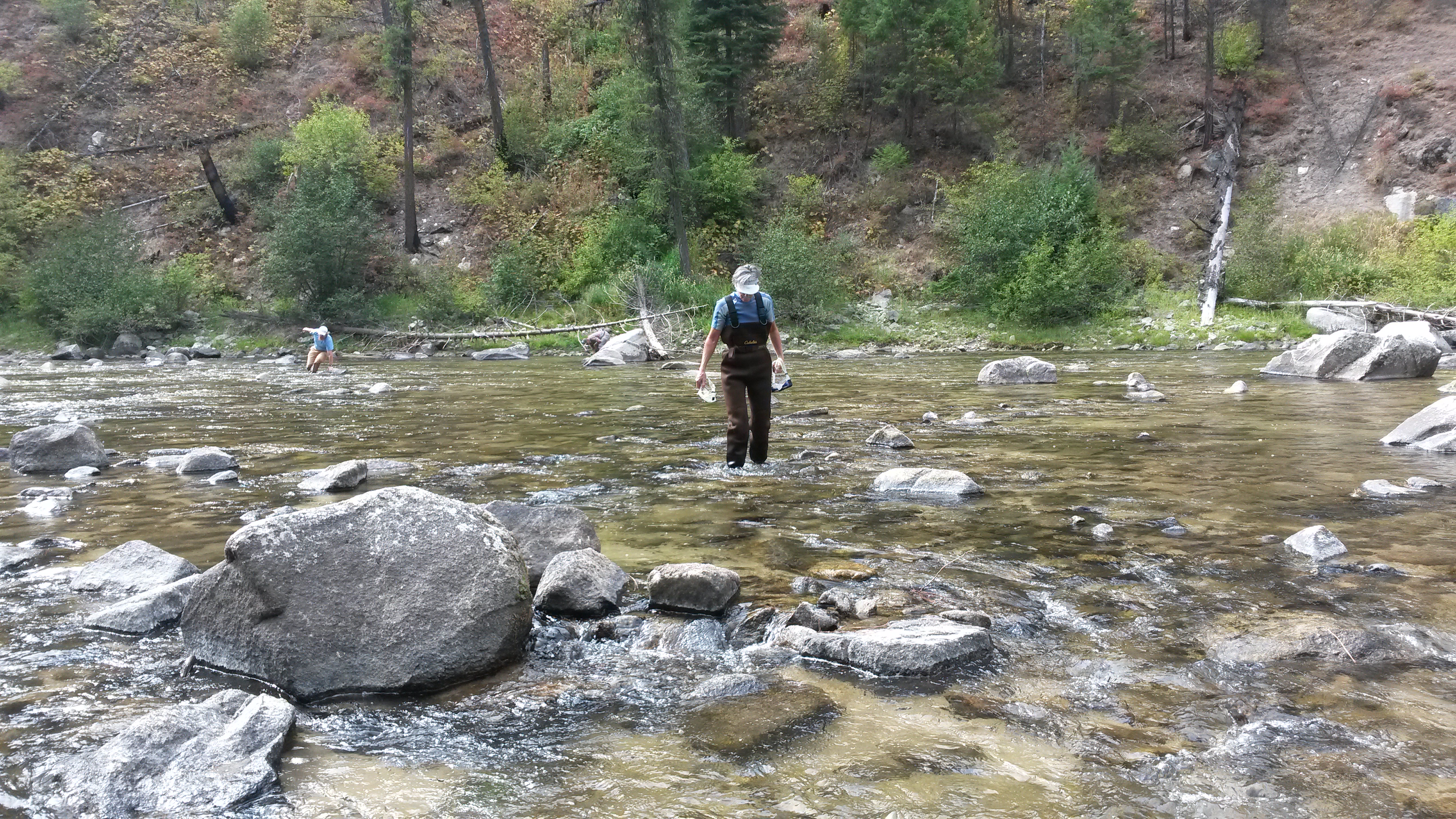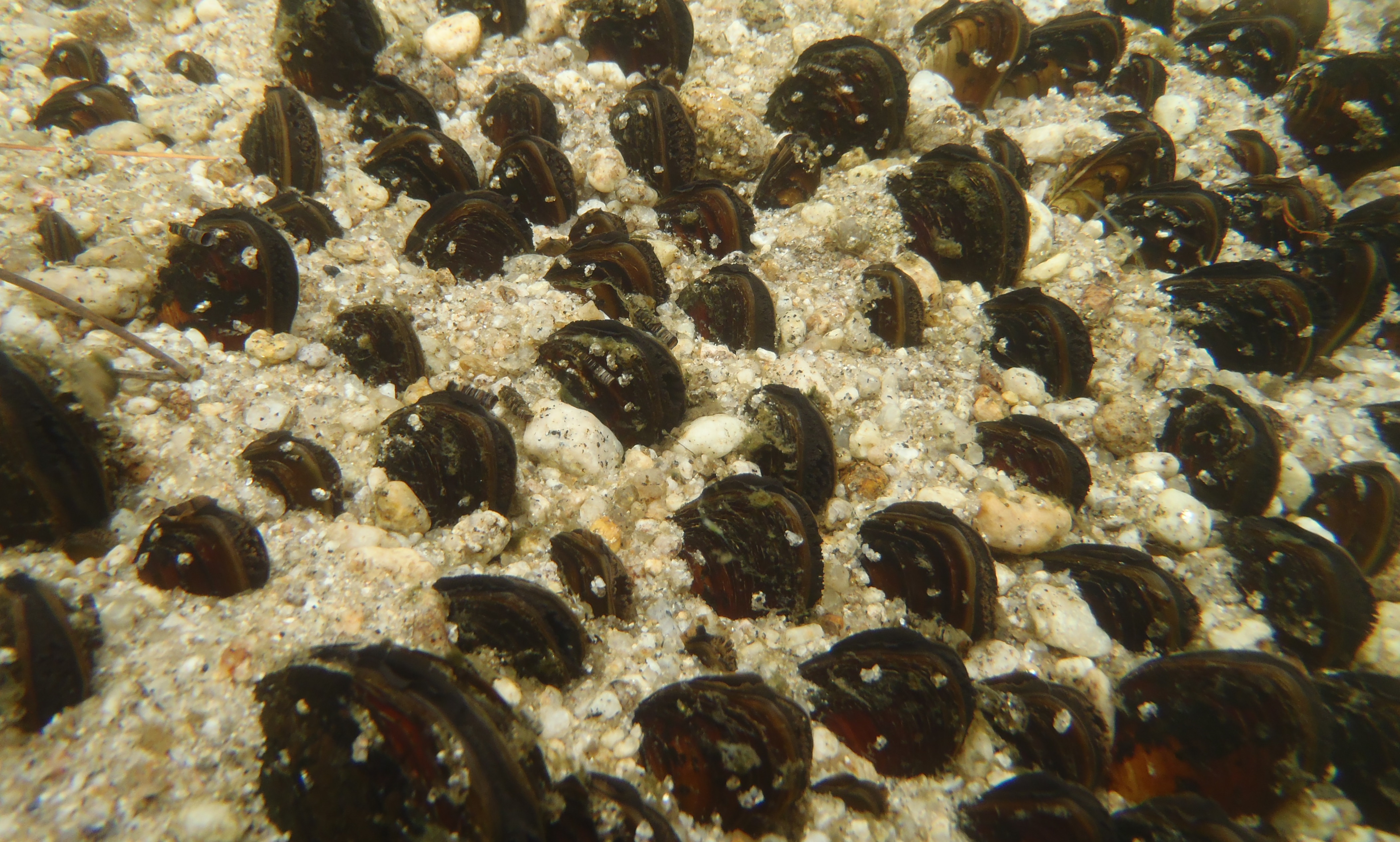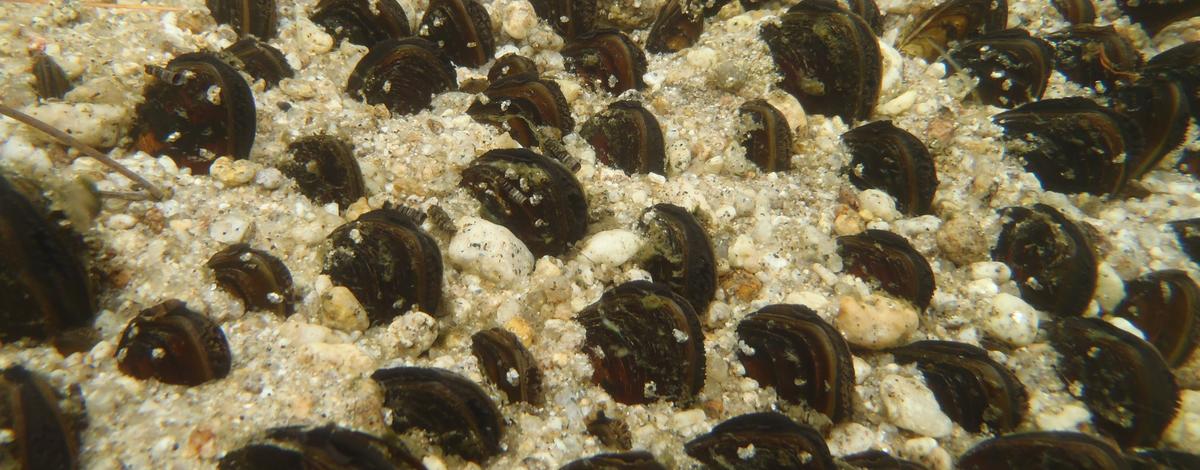What’s blue, can live to be 100 years old, and hitches a ride on salmon? The answer: western pearlshell mussel.
This species lives in clean freshwater streams and is the longest-lived mussel known in the West. Although widely distributed, numbers of western pearlshells are in decline, and it is a Species of Greatest Conservation Need under Idaho’s State Wildlife Action Plan (SWAP).
For several years IDFG’s fish crews have been recording freshwater mussels during snorkel surveys, providing important information on occurrence. More recently, surveys specifically targeting mussels have been designed and are beginning to be used by IDFG, Forest Service, and Tribal biologists.
The old adage “You don’t know what’s out there until you look” hit home last month during a visit to the South Fork Salmon River to attend a workshop hosted by the Xerces Society and the Nez Perce Tribe.

Turns out that one of Idaho’s important Chinook salmon streams is also home to extremely high-density hotspots of western pearlshells. Coincidence? Maybe not. Tiny western pearlshell larvae must briefly attach to the gills of Chinook or coho salmon, cutthroat trout, or steelhead as they transition to juveniles. The mussel larvae drop off their fish host after one to four weeks and settle into the sediment to begin to grow ---for decades if all goes well.
In return for that free ride, mussels improve habitat for fish by filtering impurities from the water as they feed and by creating habitat for macroinvertebrates that fish eat. Idaho’s freshwater mussels are not particularly tasty to humans, but they are vulnerable to other disturbances such as high water temperatures or exposure in low water flows. Mapping western pearlshell and other species of native freshwater mussels in Idaho will be the focus of field work in upcoming summers.


